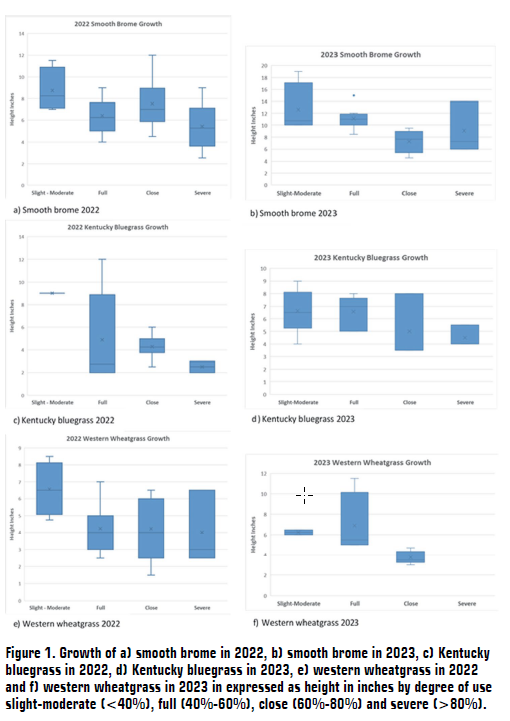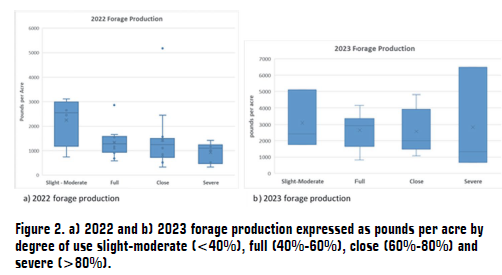NDSU Extension evaluates impacts of grazing use on grassland growth and production
(AS2100-9, December 2023)Grazing management decisions can have long-term impacts on plant growth and forage production. The goal of this program is to demonstrate the impact of grazing use on grassland growth and development the following growing season to facilitate improved grazing management and enhanced climate resilience of forage resources. With the exception of Kentucky bluegrass in 2023, the highest growth occurred in pastures with slight to moderate use and the lowest growth in pastures with severe use. Severe use reduced forage production by as much as 57% (2022) and 54% (2023). The results of this program demonstrate the importance of having a grazing management plan and monitoring grazing use to reduce long-term impacts to grazing resources.

